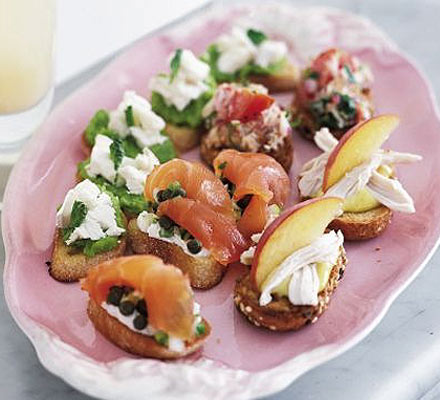Citrus-cured salmon gravadlax
Gravadlax makes a stunning prepare-ahead starter or centrepiece for your New Year festivities
-
Prep:40 mins
Plus curing - Easy
Nutrition per serving
-
kcal 271
-
fat 19g
-
saturates 8g
-
carbs 5g
-
sugars 5g
-
fibre 1g
-
protein 19g
-
salt 3.61g
Ingredients
- 1 filleted side of very fresh salmon - weighing about 900g
- very large bunch dill (about 80g)
- 100g mixed baby salad leaves and extra virgin olive oil, to serve
- 250g Maldon sea salt
- 375g demerara sugar
- 4 star anise
- 1 tsp coriander seeds
- zest 3 oranges
- zest 1 lime
- zest 1 lemon
- 100ml double cream
- 100ml crème fraîche
- 50g freshly grated horseradish or 85g creamed horseradish
- juice ½ lemon
Tip
Using up the leftoversAny leftover salmon can be used to make a salmon tartare. Mix about 200g of diced gravadlax with chopped shallot, English mustard and lemon juice to taste and serve with toast.Curing for longer
My gravadlax is very lightly cured as I only leave it in the salt mix overnight, because I like the sushi-type texture of the salmon – still a little raw and not too salty. To cure the salmon for longer, which will give it more of a smoked salmon-type texture, keep the fish in the salt cure for up to 2 days before rinsing and slicing it.A cheaper version
For a much cheaper version of this dish you could also use the salt mix to cure mackerel fillets. Simply cut the fillets into squares and serve it with the salad leaves and horseradish cream.Making this recipe for fewer people
I think gravadlax is the perfect starter for a large number of guests, or as part of a buffet, but it can be made for fewer people using a 500g piece of salmon and half the salt mix. For a buffet, I would cut the salmon into longer slices and serve it with a potato salad along with the salad leaves and horseradish cream in separate bowls for everyone to help themselves to.
Method
Tip all the ingredients for the salt mix into a food processor and whizz until everything is combined and the spices are completely ground.
Stroke your hand along the salmon fillet to check for any stray bones. If you find any, pull them out with a pair of tweezers or small pliers.
To skin the salmon fillet, lay the fish skin-side down with the tail end closest to you. Insert your knife at an angle at the tail end and cut through the flesh to the skin. Turn the blade so it’s almost flat against the skin, then take hold of the skin with the other hand. Pull and wiggle the skin towards you so as to cut the fillet away. Halfway through removing the skin, hold the knife firmly and flip the fillet over. Gently lift the fillet away from the skin and discard the skin. Trim away the thinner part, plus any fat around the edges, so that the fillet has an even shape.
Scatter about a third of the salt mix onto a large tray in a line about the size of the salmon fillet. Lay the salmon, skinned-side down, over the salt and pack the rest of the salt on top. Cover with cling film, put another tray on top and weigh it down with a few cans or an empty casserole dish. Leave in the fridge overnight or for at least 10 hrs.
Under cold running water, wash the salt mix off the salmon fillet, then dry with kitchen paper. Finely chop the dill. Lay the salmon on a board and cover with the dill, pressing it down to pack it onto the salmon.
If serving as a plated starter, use a sharp carving knife to cut the salmon straight down into fine slices, allowing 6 slices for each plate.
To make the horseradish cream, whisk together the cream and crème fraîche. Add the horseradish, lemon juice and seasoning, then continue to whisk until thick. Dress the salad leaves in a little olive oil. You are now ready to plate up.
Arrange a neat pile of baby salad leaves in the centre of each plate. Curl slices of the salmon into bow shapes around the leaves. Continue all the way around the plate in a petal fashion. Use 2 teaspoons to make small quenelles of horseradish cream and spoon each into each bowl.





















